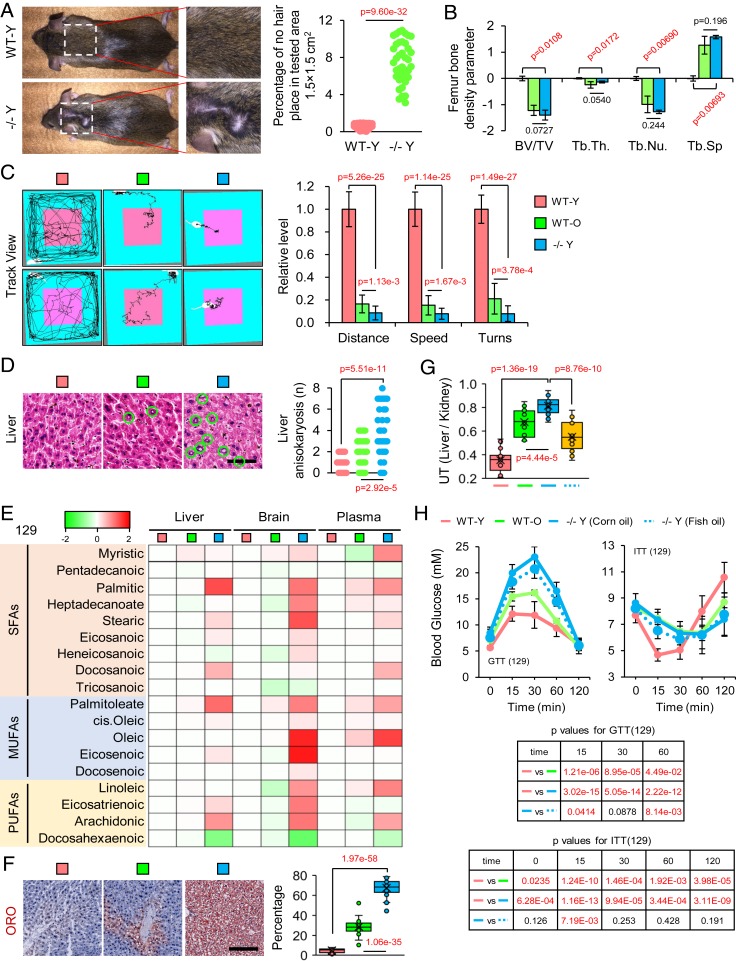Fig. 2.
Deletion of Elovl2 caused severely accelerated aging phenotypes and metabolic dysfunction in mice. (A) Hair loss in young (8 mo) Elovl2 knockout (−/− Y) but not wild type (WT-Y) 129/sv mice. (B) Microcomputed tomography (micro-CT) showing bone volume/total volume (BV/TV) and trabecular thickness (Tb.Th.) in the femur of mice. Error bars, SEM. Levels of significance were calculated with two-tailed Student’s t test. Tb.Nu., trabecular number; Tb.Sp, trabecular spacing. (C) Open-field test results in different groups of 129/sv mice. Error bars, SEM. Levels of significance were calculated with two-tailed Student’s t test. (D) Hematoxylin and eosin staining and pathological section analysis of liver tissue. Green cycles show the abnormal structures. (Scale bar, 100 µm.) Levels of significance were calculated with two-tailed Student’s t test. (E) Heatmap of fatty acid species in the liver, brain, and plasma of 129/sv mice. (F) ORO staining of liver. Error bars, SEM. (Scale bar, 100 µm.) Levels of significance were calculated with two-tailed Student’s t test. (G) Ultrasound test results. Error bars, SEM. Levels of significance were calculated with two-tailed Student’s t test. (H) GTT and ITT results. Error bars, SEM. Levels of significance were calculated with two-tailed Student’s t test.

